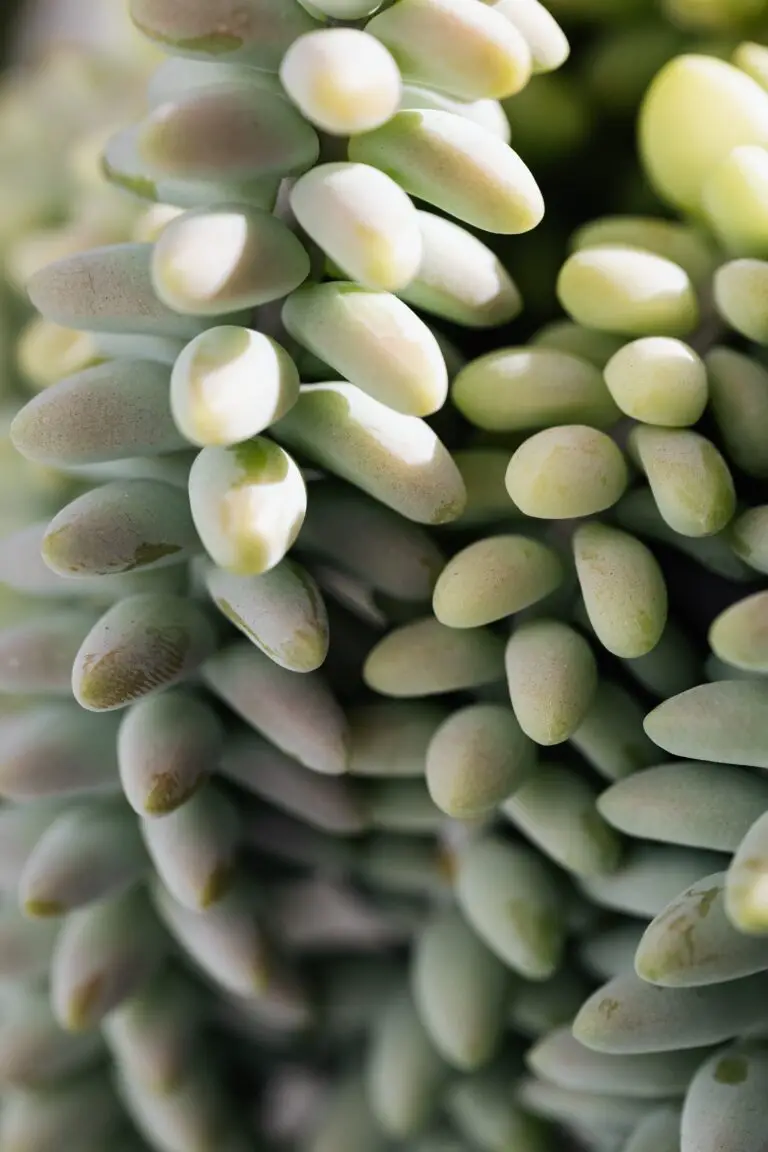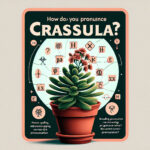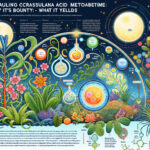“`html
Introduction to Crassulacean Pronunciation
The journey of exploring the fascinating world of botany begins with the mastery of technical jargon, which often includes plant names that can be quite tongue-twisting. Take, for instance, the term crassulacean. Learning to pronounce botanical terms correctly is crucial, not just for classroom correctness, but for clear communication among plant lovers and professionals alike. It’s the linguistic bridge that connects us to a richer understanding of the natural world.
Why does proper pronunciation in botany matter? Imagine confidently walking into a gathering of plant aficionados and discussing the essential processes of succulent plants, like the Crassulacean Acid Metabolism (CAM), only to be stifled by mispronunciation. It can be somewhat embarrassing and sometimes even changes the course of the conversation. We’ve all been there – talking about a ‘fascinating aspect of crass… crassu… well, that thing!’
Crassulacean, which pertains to a group of plants such as Sedum or Echeveria, is pivotal in botany discussions, particularly when delving into the marvels of their survival strategies, like CAM. This process enables these resilient succulents to thrive in arid conditions by opening their stomata at night to reduce water loss. To fully comprehend and share this incredible adaptation, pronouncing ‘crassulacean’ correctly is paramount. It’s like holding the key to a secret garden of knowledge.
Let’s paint a picture: A student of botany, eager to impress their professor, stumbles upon the word ‘crassulacean’ in their textbook. Rather than shying away or glossing over it, envision their determination to nail the pronunciation and thus solidifying their keen grasp on the subject. That moment of clarity not only boosts self-confidence but also garners respect among peers. It’s these small victories that make the study of plants an enriching experience.
Now, if you’re itching to get the pronunciation just right and join the ranks of those in-the-know, watch this illustrative video that demystifies the pronunciation of ‘crassulacean.’ With a bit of practice, you’ll be saying it like a pro!
Remember, mastering the language of botany opens doors to deeper insights and engaging exchanges with fellow enthusiasts. Although we currently don’t have an article on the importance of botanical pronunciation, it’s a topic worth exploring for anyone looking to flourish in their botanical journey.
“`
Please note that the internal link with anchor text “the importance of botanical pronunciation” is a placeholder, as there were no internal links provided by the search function. You may need to update the href attribute with an actual URL when the appropriate internal page becomes available.
Breaking Down Crassulacean Syllable by Syllable
Have you ever found yourself in the midst of a botanical conversation, a word bubbling up to your lips, only to hesitate with the pronunciation of ‘crassulacean’? Fear not! In this sonic adventure, we’ll dissect this botanical behemoth, turning it from tongue-twister to breezy banter. Let’s break it down, piece by piece, until the term ‘crassulacean’ sits comfortably on your tongue!
Picture yourself at a friendly gathering, the room buzzing with chatter about succulents. Someone mentions the Crassulaceae family, and you’re ready to dive in. Imagine the word ‘crassulacean’ as a path through a lush garden, with each syllable a stepping stone. Here’s how you cross:
Crass – like ‘grass,’ but with a crisp ‘cr’ to start, as if you’re brushing off the morning dew.
u – this isn’t just any ‘u’, it’s short and understated, almost like the ‘u’ in ‘underneath.’
la – now flow into the ‘la,’ a dash of song, as if you’re calling to a friend named ‘Lara’ from across the field.
ce – here a soft ‘s,’ seamless, like a whispering breeze through the leaves.
an – and finally, ‘an,’ not drawn out, but rather a quick nod of acknowledgment to the listener.

The rhythm of ‘crassulacean’ should feel natural, an echo of the resilience and beauty of the plants it represents. Each emphasis falls on ‘crass’ and ‘la,’ akin to the sunlight that dapples through the canopy—important, but balanced. With these phonetic stepping stones, the next time you share your passion for succulent plants in a conversation, ‘crassulacean’ will roll off your tongue with the grace of a leaf on the breeze.
Note: If you’re looking to enhance your verbal repertoire with more pronunciation prowess, check out our guide on other challenging botanical names.
Common Mispronunciations and How to Avoid Them
It’s easy to trip over the word ‘crassulacean’ if you’re not familiar with its cadence and phonetic subtleties, but fear not! We’re here to demystify this botanical term and smooth out those rough pronunciation edges. Many people try to tackle ‘crassulacean’ with gusto only to swap syllables or stress the wrong parts. For example, a frequent faux pas is pronouncing it as “crass-uh-lay-see-un,” when in reality, the emphasis should gracefully hop onto the second syllable: “krass-yoo-LAY-shun.”
To root out these slip-ups, let’s break down ‘crassulacean’ into its phonetic chunks. First off, that tricky ‘crassu-‘ is not ‘crass’ as in rude, but more of a delicate ‘krass.’ Follow it by a smooth ‘yoo’ and not an abrupt ‘uh.’ Combine them, and you’re halfway there! Next up is the ‘lacean’ part—think ‘lace’ like the delicate fabric then add an airy ‘-an,’ finishing off with a crisp ‘-shun’ and not a drawn-out ‘-see-un.’
For those who are more auditory learners, PronounceHippo.com offers a spectacular platform where you can hear the correct pronunciation of ‘crassulacean’ and practice until you sound like a seasoned botanist. Visualization can also be helpful, so imagine announcing the word as if you’re a nature documentary narrator, bestowing the secret lives of these succulent plants upon an enrapt audience.
Here’s a useful tip: practice saying ‘crassulacean’ in front of a mirror, observing the movement of your mouth and how each sound should form. Record yourself to track progress, and don’t be afraid to exaggerate the syllables at first. Think of it as the linguistic equivalent of doing slow-motion exercise to perfect technique! And remember, learning should be fun, so take a look at the  image of this word featured in the crisp pages of a dictionary for encouragement.
image of this word featured in the crisp pages of a dictionary for encouragement.
If you’re itching for even more pronunciation drills, our site has additional resources that delve into the secrets of articulating some of the most tongue-twisting terms in the plant kingdom. With a bit of practice, you’ll be pronouncing ‘crassulacean’ with unparalleled eloquence in no time!
The Linguistic Roots of Crassulacean
Embark on a linguistic journey as we explore the etymological landscape of the term ‘crassulacean’. Derived from the Latin word “crassus,” meaning “thick” or “dense,” the addition of the suffix “-aceae” (indicating a family in botanical nomenclature) gives us ‘crassulacean’. It’s the botanical term used to describe a family of succulent plants, known for their thick, fleshy leaves that store water.

Diving deeper, crassulacean pronunciation follows the classic Latin stress patterns, often placed on penultimate syllables, giving it the distinct cadence of “krass-yoo-LAY-see-an.” Recognizing Latin’s imprint on botanical terms not only aids in pronunciation but also in understanding the underlying characteristics they describe.
Consider ‘succulent’, another word with Latin roots, ‘sucus’, meaning ‘juice’ or ‘sap’. Much like ‘crassulacean’, ‘succulent’ reflects the plant’s ability to retain water. The etymological parallels between these two terms exemplify the interweaving of language and nature, offering a rich spectrum of vocabulary connected by ancient linguistic threads.
By appreciating the roots of ‘crassulacean’, we unlock a gateway to other botanical terminologies etched in Latin, fostering a deeper connection with the world of plants. It’s the language of science laced with history, enhancing our grasp on the pronunciation and the rich tapestry that is plant taxonomy.
Practice Exercises for Perfecting Your Pronunciation
Ever whispered to a friend, “How do you even say crassulacean?” You’re not alone! Let’s clear the air with some effective ways to conquer the pronunciation of this perplexing term. Ready to roll up your sleeves and practice? Let’s dive in!
1. Mirror, Mirror on the Wall
Start with the man in the mirror—no singing required, just speaking. Stand in front of a mirror and watch the shape of your mouth and the movement of your tongue as you say “crassulacean.” Focus on parts of the word that trip you up and keep at it until you can see and hear the improvement.
2. Slow Motion Makes Perfect
Break it down and say it slow. Start with “crass,” then add a “u,” follow it with “lace,” and finish with “an.” Repeat, repeat, and then repeat some more. As you get more comfortable, increase your speed until it rolls off the tongue.
3. Tongue Twister Challenge
Nothing says pronunciation workout like a good old tongue twister. Try this one on for size: “Sally’s crassulacean causes casual confusion, especially on occasions at oceanic crust stations.” Say it ten times fast; it’s quite the linguistic gymnastics.
4. Parrot Practice with a Pal
Partner up for some parrot practice. Take turns saying “crassulacean” with different emotions—happy, surprised, questioning. It’s a fun and engaging way to get the pronunciation down pat.
A tool that can give your pronunciation a significant boost is watching and mimicking pronunciation-focused videos. For instance, check out this helpful resource—practice your pronunciation with exercises designed for high-frequency English words.
Embed this video into your daily routine:
Remember, consistence is key—daily drills do the deed! Now go ahead, make “crassulacean” your word, say it with confidence, and be the savant you were meant to be!
Conclusion: The Importance of Proper Pronunciation in Botany
As we leaf through the botanical lexicon, one term stands out for its intricate syllables and exotic resonance – crassulacean. Mastering the pronunciation of this term is not a mere academic exercise; it’s a reflection of our respect for the scientific community and its centuries-old traditions. Correct articulation serves as a bridge connecting scholars, enthusiasts, and budding botanists, allowing for seamless communication and shared understanding in our leafy realm.

In the wild, just as a misidentified plant can lead to an unpleasant surprise, so too can a mispronounced term lead to confusion. When a correct pronunciation rolls off the tongue, like dew from a morning leaf, it instills confidence and clarity. Imagine discussing the adaptation strategies of crassulacean acid metabolism (CAM) plants with fellow botanists—those moments when the right term is pronounced impeccably underscore your depth of knowledge and attention to detail.
It’s not enough to recognize the features of a Sempervivum tectorum; one must also say its group—the Crassulaceae—with the same ease as stating its common name, hens and chicks. Proper pronunciation in botany isn’t elitism; it’s about fostering a culture of precision and care that can be heard in every syllable we speak.
So let us strive for accuracy in our botanical vernacular, for it anchors us to a tradition of meticulous scholarship. Like tendrils seeking sunlight, our pursuit of correct pronunciation should be relentless and nurtured with regular practice. Together, we can cultivate a garden where scientific communication thrives, rooted in the rich soil of well-spoken words. Continue to learn, to speak, and to grow—our botanical journey is as much about the words we share as the plants we cherish.
Frequently Asked Questions
Ever wondered why that succulent in your windowsill is more than just a cute decoration? It’s all about crassulacean acid metabolism (CAM), a fancy term for a super cool survival strategy some plants use. But let’s break it down some more—with real talk, no jargon.

What plants exhibit crassulacean acid metabolism?
Imagine you’re lost in the desert, it’s hot, you’re thirsty, and you spot a plant. Chances are, it’s a pro at crassulacean acid metabolism. These plants, like sedum morganianum that you might call ‘Donkey tail’, have learned to stay hydrated by opening their pores at night instead of the day. Why? Because it’s way cooler and they lose less water—a desert hack!
Why is it important to pronounce scientific terms correctly?
Here’s the scene: You’re at a garden party, and you casually mention your flourishing ‘krass-oo-LAY-shun’ beauties. Everyone’s impressed, and you’ve not only nailed the pronunciation but also opened up a garden-fresh conversation about science! Getting these terms right isn’t just about sounding smart; it’s about sharing the amazing world of plants with others. And when we can talk about it, we can appreciate it even more.
So whether you’re a green thumb or just starting out, remembering how to pronounce crassulacean and what it means is your secret ingredient to joining the botanical banquet. Who knows, maybe you’ll even inspire someone else to start their own windowsill jungle.



